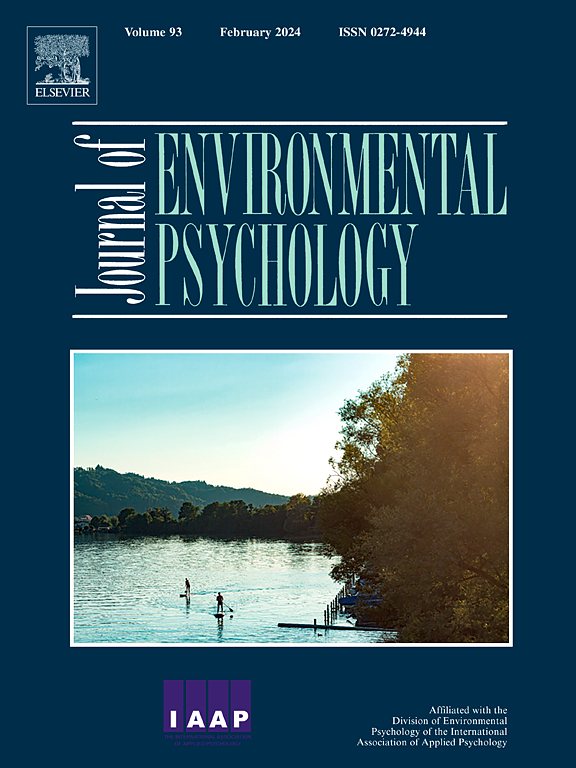揭示行为原因的相关性:重新审视态度-行为差距
IF 7
1区 心理学
Q1 ENVIRONMENTAL STUDIES
引用次数: 0
摘要
要用一个特定的理由来解释行为,当人们采取行动(例如,骑自行车)时,理由(例如,保护环境)必须存在,而当人们不采取行动(例如,不骑自行车)时,理由(例如,不骑自行车)必须缺席。这种想法与行为科学家在评估一个原因的行为相关性时通常应用的统计基准产生了共鸣。与臭名昭著的态度-行为差距所暗示的相反,解释行为中的少量差异并不必然挑战原因的行为相关性。问题的出现是因为不同的人有不同的理由去从事一种行为,甚至不从事这种行为。通过重新分析之前收集的两个数据集,我们证实了环境保护原因对行动的敏感性和对不作为的特异性。此外,我们证实,当使用特定于个人的基准而不是特定于行为的基准来衡量理由的存在和缺失时,这两种效果变得更加令人信服。本文章由计算机程序翻译,如有差异,请以英文原文为准。
Uncovering the relevance of reasons for behavior: The attitude-behavior gap revisited
To use a particular reason to explain behavior, the reason (e.g., to protect the environment) must be present when people engage in the action (e.g., riding a bike) and absent when people do not (e.g., not riding a bike). This thinking resonates in the statistical benchmark that behavioral scientists typically apply when assessing a reason's behavioral relevance. In contrast to what the notorious attitude-behavior gap insinuates, explaining small amounts of variance in a behavior does not inevitably challenge the behavioral relevance of reasons. The problem arises because different people have different reasons for engaging in a behavior and even for not engaging in it. By reanalyzing two previously collected data sets, we corroborate the environmental-protection reason's sensitivity for actions and specificity for inactions. Additionally, we confirm that both effects become even more convincing when person-specific rather than behavior-specific benchmarks for the presence and absence of a reason are employed.
求助全文
通过发布文献求助,成功后即可免费获取论文全文。
去求助
来源期刊

Journal of Environmental Psychology
Multiple-
CiteScore
10.60
自引率
8.70%
发文量
140
审稿时长
62 days
期刊介绍:
The Journal of Environmental Psychology is the premier journal in the field, serving individuals in a wide range of disciplines who have an interest in the scientific study of the transactions and interrelationships between people and their surroundings (including built, social, natural and virtual environments, the use and abuse of nature and natural resources, and sustainability-related behavior). The journal publishes internationally contributed empirical studies and reviews of research on these topics that advance new insights. As an important forum for the field, the journal publishes some of the most influential papers in the discipline that reflect the scientific development of environmental psychology. Contributions on theoretical, methodological, and practical aspects of all human-environment interactions are welcome, along with innovative or interdisciplinary approaches that have a psychological emphasis. Research areas include: •Psychological and behavioral aspects of people and nature •Cognitive mapping, spatial cognition and wayfinding •Ecological consequences of human actions •Theories of place, place attachment, and place identity •Environmental risks and hazards: perception, behavior, and management •Perception and evaluation of buildings and natural landscapes •Effects of physical and natural settings on human cognition and health •Theories of proenvironmental behavior, norms, attitudes, and personality •Psychology of sustainability and climate change •Psychological aspects of resource management and crises •Social use of space: crowding, privacy, territoriality, personal space •Design of, and experiences related to, the physical aspects of workplaces, schools, residences, public buildings and public space
 求助内容:
求助内容: 应助结果提醒方式:
应助结果提醒方式:


